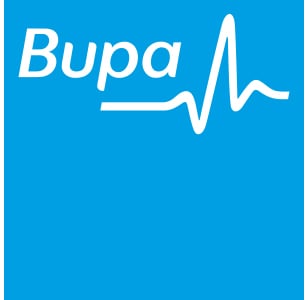It’s fair to say that chiropractic care has something of a unique approach to wellness and health. While not widely available on the NHS, some do find that chiropractic care helps when it comes to managing issues such as back pain, shoulder pain, and other bodily aches..
But are toxins released after a chiropractic adjustment? Given that chiropractic care blends aspects of alternative medicine and modern science, this subject requires something of a nuanced understanding. In the following article, we’re going to explore what toxins - if any - are released after chiropractic adjustments and the implications for those seeking chiropractic treatments. Let’s take a look!
What are Chiropractic Adjustments?
Chiropractic adjustments involve the manipulation of the spine by a qualified chiropractor to improve spinal motion and enhance the body's physical function, and this form of therapy is often sought for back pain, neck pain, headaches, and various musculoskeletal conditions. The principle of chiropractic care is based on the belief that proper alignment of the body's musculoskeletal structure - particularly the spine - enables the body to heal itself without surgery or medication. However, it’s important to point out that not all doctors and scientists agree with these principles.
During an adjustment, chiropractors use their hands or a small instrument to apply a controlled, sudden force to a spinal joint, and this procedure is known as spinal manipulation. It's intended to restore joint mobility and alleviate pain and muscle tightness, allowing tissues to heal and consequently improve overall health.
While chiropractor care isn’t widely available on the NHS, some insurance providers in the UK offering health insurance for seniors include chiropractic treatment as part of their PMI.
Addressing the Toxin Release Claim
So, what ‘toxins’ are released after chiropractic adjustment? Many proponents of chiropractic care suggest that adjustments can help detoxify the body, and make this claim based on the premise that spinal manipulation can stimulate the lymphatic system, which plays a significant role in removing toxins and waste from the body.
However, the term 'toxins' in this context is often not clearly defined, so it’s important to distinguish between the colloquial use of 'toxins' in alternative medicine and the specific, medically recognised toxins. In scientific terms, toxins refer to substances that are harmful to the body, including metabolic wastes, environmental pollutants, and other harmful chemicals. Put simply, the idea that these specific toxins are directly released through chiropractic adjustment is simply a myth.
Potential Substances and Misconceptions
So, what does actually happen during a chiropractic adjustment? While the direct release of toxins post-chiropractic adjustment is a contested claim, some changes can actually occur in the body: for example, some believe that the manipulation and mobilisation of the spine can result in a temporary increase in circulation. This increase could potentially aid in the more efficient removal of metabolic byproducts from muscle and tissue activity - which are not 'toxins' in the strictest sense - but can contribute to feelings of discomfort or fatigue if they accumulate.
Another aspect to consider is the psychological impact of chiropractic care; the feeling of relaxation and relief after an adjustment might be misconstrued as a sign of toxins leaving the body. In reality, this sensation could be attributed to the release of endorphins and the reduction of physical stress and tension in the muscles and joints.
Real Effects of Chiropractic Adjustment

Moving beyond the debated topic of toxin release, it's important to focus on the tangible benefits and physiological changes that chiropractic adjustments can offer. Clinical evidence has shown that chiropractic care can effectively reduce pain, improve spinal mobility, and enhance overall physical function. These adjustments are also known to have a positive effect on the nervous system, often resulting in pain relief, decreased muscle tension, and improved range of motion. These effects are primarily due to the mechanical manipulation of the joints, which can help restore proper alignment and alleviate pressure on the nerves.
Safety and Efficacy Concerns
When considering chiropractic adjustments, it’s always important to consider safety and efficacy, especially as chiropractic care is still considered an alternative medicine. Generally, the practice of chiropractic care is considered safe when performed by a trained and licensed professional, however, like any medical treatment, it can have risks, particularly for those with chronic or pre-existing health conditions. So if you do consider this form of therapy, it’s essential for you to discuss your health history with your chiropractor to assess any potential risks.
Regarding efficacy, numerous studies have affirmed the effectiveness of chiropractic care for specific conditions, particularly lower back pain, neck pain, and some types of headache. However, research is mostly limited or unfounded when it comes to conditions like allergies, chronic headaches, and mental health conditions. If you are interested in this form of therapy, you should only approach it as one component of achieving wellness and strength, rather than something to rely on exclusively.
Final Thoughts
Overall, the idea that toxins are released after a chiropractic adjustment remains a topic more rooted in anecdotal evidence than scientific fact. The true value of chiropractic care lies in its proven ability to alleviate pain, improve mobility, and contribute to overall wellness - but it’s also important to understand the risks and limitations associated with this form of therapy.
Related Posts
Get a quote!
Compare the best health and life insurance policies on the market by filling in the short form below.
Thank you, John
We will be in touch shortly to run through your free tailor-made quote from UK’s leading insurers. Our prices won’t be beaten with our best price guarantee.
At Usay we take your data security very seriously and we will not sell your data to third parties. By clicking search now you agree to allow us to contact you regarding your free, no obligation quotation by email or phone. Please see our Privacy Policy and general terms.











